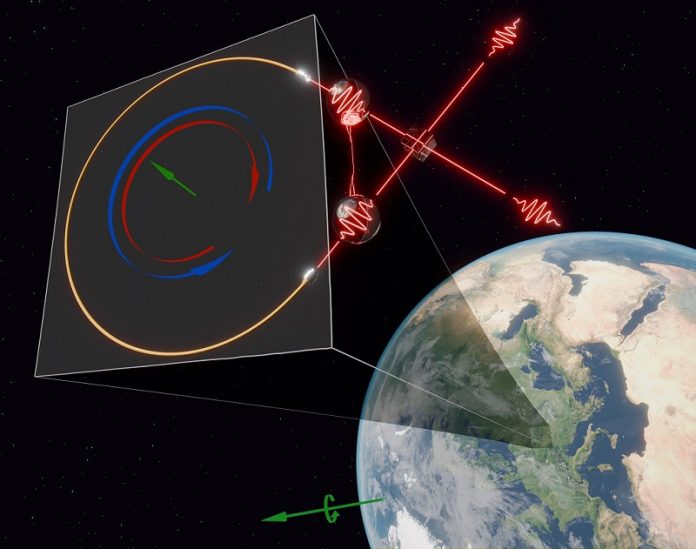
A team of researchers, led by Philip Walther at the University of Vienna, has made an exciting discovery about quantum entangled photons and how they react to the Earth’s rotation.
This groundbreaking experiment, published in Science Advances, could lead to new ways of exploring the connections between quantum mechanics and general relativity.
Quantum entanglement is a phenomenon where two or more particles become interconnected in such a way that the state of one particle instantly influences the state of the other, no matter the distance between them.
This strange property has intrigued scientists for years and holds potential for incredibly sensitive measurements.
Optical Sagnac interferometers are currently the best devices for measuring rotations. They have played a key role in our understanding of physics, including Einstein’s special theory of relativity.
These interferometers measure rotational speeds with high precision, but they are limited by classical physics.
Walther’s team aimed to surpass these limitations by using quantum entanglement. They built a large optical fiber Sagnac interferometer and managed to keep noise levels low and stable for several hours.
This stability allowed them to detect high-quality entangled photon pairs, achieving rotation precision a thousand times better than previous quantum optical Sagnac interferometers.
In a Sagnac interferometer, particles traveling in opposite directions around a rotating loop reach the starting point at different times. When using entangled particles, this effect is even more pronounced.
The entangled particles behave as if they are one, testing both directions at once and accumulating twice the time delay compared to non-entangled particles. This phenomenon is called super-resolution.
The experiment involved two entangled photons traveling inside a 2-kilometer-long optical fiber wound into a large coil, creating an interferometer with an effective area of over 700 square meters.
One major challenge was isolating the Earth’s steady rotation signal. “The key was to establish a reference point for our measurement where light remains unaffected by Earth’s rotation,” explained lead author Raffaele Silvestri. Since they couldn’t stop the Earth from spinning, the team devised a clever solution.
They split the optical fiber into two equal-length coils and connected them with an optical switch.
By toggling the switch on and off, they could effectively cancel out the rotation signal, allowing them to extend the stability of their apparatus. “We basically tricked the light into thinking it’s in a non-rotating universe,” said Silvestri.
The team successfully observed the effect of Earth’s rotation on a maximally entangled two-photon state.
This confirmed the interaction between rotating reference systems and quantum entanglement, as described in both Einstein’s special theory of relativity and quantum mechanics, with a thousand-fold improvement in precision compared to earlier experiments.
“This is a significant milestone,” said Haocun Yu, a Marie-Curie Postdoctoral Fellow who worked on the experiment. “A century after the first observation of Earth’s rotation with light, the entanglement of individual quanta of light has finally reached similar sensitivity levels.”
Philip Walther believes that their results and methods will pave the way for even greater improvements in the sensitivity of entanglement-based sensors. “This could open the door for future experiments that test how quantum entanglement behaves through the curves of spacetime,” he added.
This research represents a major step forward in our understanding of quantum mechanics and its interaction with the physical world, potentially leading to new discoveries in both fields.



